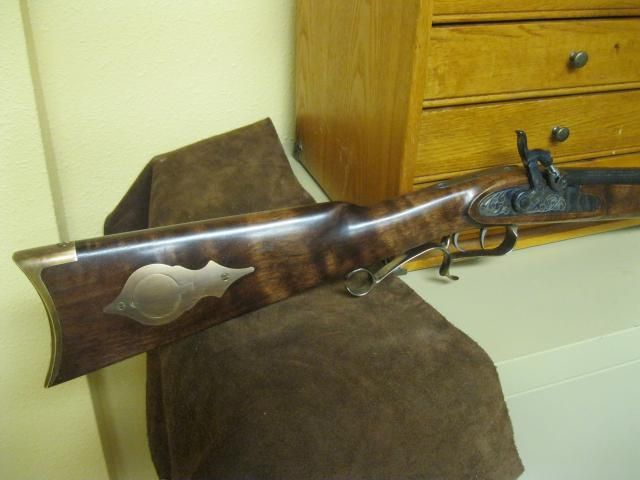Several thoughts here:
Usually, walnut doesn't need any stain to look good. Of course, what's good and what's not good is a matter of opinion so here's my suggestion.
Before you stain or seal or do anything except the final whiskering, take the stock out into the bright sunlight along with a wet wash rag.
Wet the wood and give it a look, both up close and at a little distance.
I recommend wetting it with mineral spirits rather than water. Mineral spirits drys quickly and won't raise the grain, but you still get a good look at what the wood will look like.
While the wood is still wet, the darkness and color are exactly what the wood will look like if you do nothing but apply a good finishing oil.
If you like what you see, forget the stain. If you don't, then have at it with the stain but be sure to use only water based or alcohol based stains. Do NOT use an oil based stain like Minwax.
Hmmm. I have to ask why no Minwax. I've used it on both furniture I built and guns (see pic below) without issue. I used dark walnut Minwax under about 8 coats of Truoil on my Hawken and it really made the grain pop. So, can you explain the reason for avoiding Minwax?
IMO, wood sealer is not needed for a good gunstock finish. The finishing oil will do everything needed without applying a sealer.
If you do apply a sealer, remember, it seals the wood so all staining must be done before using it.
As for filling the open pores, some people like them left open. As you asked about filling them I assume you don't.
I've used Birchwood Casey Gun Stock Filler and it works fine.
A cheaper way to fill the grain is to apply a small amount of the finishing oil and then sand the area with some 120 or 220 grit sandpaper.
The sanding dust will mix with the oil and fill the open pores.
Yes, it takes some time to use this method but it works well and its only expense is a little sandpaper.
I much prefer this method to fillers. Another reason to avoid fillers is that they often contain silica, which fills the pores but is hell on checkering tools. :cursing:







